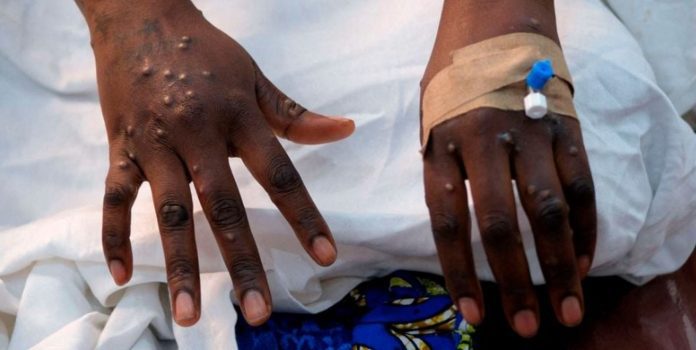Kenya has been experiencing rising cases of MPox. As at the start of August 2025, the disease had been confirmed in 23 counties. Among the people, many wonder what this disease is all about? How does it spread? Well, let us explore:
What is it?
According to the Centre for Disease Control (CDC), Mpox (formerly known as the monkey pox) is caused by infectious virus. “It is part of the same family of viruses as the variola virus which causes smallpox,” the CDC cites. It adds that the symptoms associated with Mpox are almost similar to those exhibited by patients with small pox. However, these symptoms will tend to be milder and will rarely be aggravated to fatal status. The World Health Organization (WHO) adds that this virus is classified as a viral zoonosis or a virus transmitted to humans from animals.
Transmission
According to the WHO, animal-to-human transmission can occur from direct contact with the blood, bodily fluids, or cutaneous or mucosal lesions of infected animals. “Human-to-human transmission can result from close contact with respiratory secretions, skin lesions of an infected person or recently contaminated objects,” the WHO cites.
“Transmission via droplet respiratory particles usually requires face-to-face contact or during intimate physical contact, such as kissing, cuddling, or sex.”
The CDC further states that pregnant women can spread the virus to their fetus through the placenta. “Touching items (such as clothing or linens) that previously touched the infectious rash or body fluids are also prominent modes of transmission,” the CDC states. The spread of this disease has also been established as a common detection among men who have sex with other men.
Notably, the CDC also states that Mpox can be spread from the time symptoms start in a patient to the time rashes caused by this virus have fully healed in a patient and a fresh layer of skin has formed. “The illness usually lasts for two to four weeks. However, persons without this disease’s symptoms cannot be able to spread its virus to the non-infected,” the Centre for Disease Control cites.
Symptoms
The symptoms of MPox are closely related to those of small pox. According to the CDC, some of the symptoms and signs a patient with Mpox will include fever, headache, muscle aches and backache, swollen lymph nodes, chills, and exhaustion.
“A rash that can look like pimples or blisters that appears on the face, inside the mouth, and on other parts of the body, like the hands, feet, chest, genitals, or anus,” the CDC cites. “The rash goes through different stages before healing completely. The illness typically lasts two to four weeks. Sometimes, people get a rash first, followed by other symptoms. Others only experience a rash.”
History
According to the World Health Organization, human MPox was first identified in human beings in 1970. This was done in the Democratic Republic of Congo. The patient was an infant boy of nine months. “Since this first case, a majority of cases have also been reported in Central and West Africa, including in Benin, Cameroon, the Central African Republic, Democratic Republic of the Congo, Gabon, Cote d’Ivoire, Liberia, Nigeria, the Republic of the Congo, Sierra Leone and South Sudan,” the WHO cites. The WHO classifies MPox as endemic in West and Central Africa.
The WHO states that outside of Africa, MPox was first reported in the United States in 2003. Investigations showed that the patient had come into contact with infected pet prairie dogs that had been housed together with pouched rats and dormice from Gambia that had been imported from Ghana.
This outbreak led to over 70 cases of in the United States, says the WHO. The global health body also says that cases were also been reported in travelers from Nigeria to Israel in September 2018.
“These cases have also been reported and linked to travelers from Nigeria to the United Kingdom in September 2018, December 2019, May 2021 and May 2022, to Singapore in May 2019, and to the United States of America in July and November 2021,” the WHO cites. In May 2022, multiple cases of the disease were reported in Europe and North America.
Vaccination and immunization
Following the outbreak of this disease, the Who released a vaccination and immunization guide. “WHO recommends the use of vaccines for those most at risk of exposure during outbreaks, including people who have had close contact with someone with Mpox, and health workers. People who were vaccinated against smallpox in childhood may have some cross-protection against Mpox,” the WHO stated. The WHO guide further recommended that:
- Persons who have been exposed to Mpox be put through post-exposure prophylaxis (PEP). They should also be administered with a second or third generation vaccine within four days of first exposure. This should be adequate to stall the onset of a full blown disease.
- High risk personnel should be put through pre-exposure prophylaxis (PrEP). These include health workers, laboratory personnel working with orthopoxviruses, and clinical laboratory staff performing diagnostic testing for MPox.
- Vaccination programmes must be backed by thorough surveillance and contact-tracing, testing and diagnosis.
In the same vein, the CDC states that there are currently two types of vaccines that have been approved for use against Mpox by the Food and Drug Administration. These include JYNNEOS (also known as Imvamune or Imvanex) and ACAM2000. “A patient is to be considered fully vaccinated about 2 weeks after their second shot of JYNNEOS and 4 weeks after receiving ACAM2000,” the CDC recommends. ACAM2000 is a smallpox vaccine manufactured by Sanofi Pasteur Biologics while JYNNEOS is a smallpox vaccine made by Bavarian Nordic. “There are no treatments specifically for Mpox.
READ MORE: Tuberculosis: Causes, Transmission, Symptoms, Treatment
However, Mpox and smallpox viruses are genetically similar. This means that antiviral drugs and vaccines that have been developed to protect against smallpox may be used to prevent and treat Mpox virus infections as well,” the CDC cites.
The CDC also recommends that antivirals may be administered on people who are more likely to get severely ill. These include patients whose immune systems have been compromised.
One of the antivirals that can be administered is the tecovirimat, an antiviral drug that has been approved for use by the European Medicines Agency and recommended for use by the World Health Organization, the Food and Drug Administration, and the Centre for Disease Control.








